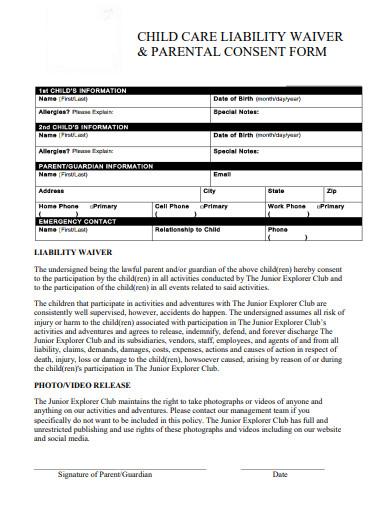Running a special needs daycare is such a rewarding experience—helping children grow, learn, and thrive in a supportive environment. But along with all the joy comes a unique set of challenges, especially when it comes to liability risks. From ensuring safety protocols are in place to managing medical needs and documentation, navigating these responsibilities can sometimes feel overwhelming. In this blog, we’ll explore practical tips and important considerations to help special needs daycare providers confidently handle liability risks, so you can focus on what matters most: creating a safe, nurturing space for the kids you care for.
Table of Contents
- Understanding Common Liability Risks in Special Needs Daycare
- Creating a Safe and Inclusive Environment for Every Child
- Training Staff to Handle Emergencies with Confidence
- Practical Steps to Protect Your Daycare from Legal Issues
- To Wrap It Up
Understanding Common Liability Risks in Special Needs Daycare
Operating a daycare for children with special needs involves a unique set of challenges that can increase the likelihood of liability issues. These risks often stem from the specialized care requirements, necessitating a deep understanding of each child’s individual needs. From medication management to physical assistance, every action must be meticulously documented and executed with precision. Failure to do so can lead to claims related to negligence, miscommunication, or even injury. Additionally, the dynamic nature of disabilities means staff must be constantly trained and updated on best practices to anticipate and prevent accidents before they happen.
Some common areas where liability risks arise include:
- Supervision lapses: Children with special needs may require closer monitoring to prevent harm or wandering.
- Equipment and environment hazards: Ensuring that facilities are fully accessible and free of potential dangers is critical.
- Medical emergencies: Staff must be proficient in handling unexpected health crises, including seizures or allergic reactions.
- Staff qualifications and training: Inadequate training can lead to improper care, which raises liability concerns.
By recognizing these risks and implementing thorough risk management strategies, special needs daycares can create safer environments that foster trust and peace of mind for families and caregivers alike.
Creating a Safe and Inclusive Environment for Every Child
Establishing a nurturing atmosphere where every child feels valued and protected is crucial in special needs daycare settings. To achieve this, staff must be trained not only in specialized caregiving techniques but also in cultural competence and empathy. Key practices include:
- Consistent communication: Ensure clear, compassionate dialogue between caregivers, children, and families to build trust and understanding.
- Personalized care plans: Tailor activities and routines to meet individual needs, promoting comfort and engagement.
- Safe physical spaces: Adapt environments to be accessible and free from hazards that could lead to injury or discomfort.
By embedding these values into daily operations, daycares not only comply with safety regulations but also foster an inclusive community. Such an environment encourages children to thrive emotionally and socially, reducing the likelihood of misunderstandings or incidents that could contribute to liability claims.
Training Staff to Handle Emergencies with Confidence
Equipping your team with the right skills to respond swiftly and effectively during emergencies is paramount in special needs daycare environments. Comprehensive training programs should go beyond standard first aid and CPR—incorporate scenario-based drills that simulate situations like allergic reactions, seizures, or evacuation procedures. These practice sessions build muscle memory and reduce panic, allowing staff to stay calm and make sound decisions when it counts the most. Confidence in emergency response not only safeguards the well-being of children but also minimizes potential liability risks for your facility.
Providing ongoing education and refresher courses ensures that your staff remains updated on the latest safety protocols and regulatory requirements. Consider including:
- Behavioral intervention techniques for handling crisis moments
- Clear communication strategies with emergency services
- Documentation and reporting best practices post-incident
Fostering a culture where every team member feels prepared and empowered transforms your daycare into a safer, more reliable space—a place where parents can trust that their children are in capable hands at all times.
Practical Steps to Protect Your Daycare from Legal Issues
Creating a legally sound environment in your daycare starts with clear policies and documentation. Make sure to develop comprehensive enrollment forms that include detailed health histories and emergency contact info, specifically addressing special needs requirements. Staff training is crucial—ensure every team member is well-versed in disability rights, emergency procedures, and tailored behavioral support techniques. Regularly updating these protocols and maintaining open channels of communication with parents not only fosters trust but also mitigates misunderstandings that could lead to legal complications.
Beyond policies and training, physical safety measures are a must. Conduct routine risk assessments of your facility to identify and resolve potential hazards, from accessibility issues to sensory-friendly spaces. Additionally, securing proper liability insurance tailored to special needs care provides a safety net should unforeseen incidents arise. Emphasize a culture of vigilance and empathy—empowering staff to proactively address concerns helps protect both children and your daycare’s reputation, ensuring a secure, nurturing atmosphere for everyone involved.
- Implement individualized care plans reviewed regularly with families and specialists
- Maintain detailed incident reports to document any accidents or behavioral issues
- Foster ongoing staff education on legal updates and best practices in special needs care
To Wrap It Up
Navigating liability risks in special needs daycare settings might sound daunting, but with the right knowledge and proactive measures, it becomes much more manageable. At the heart of it all is creating a safe, supportive environment where every child can thrive. By staying informed, fostering clear communication, and regularly reviewing your policies, you’ll not only protect your daycare from potential risks but also build a foundation of trust with families. Remember, it’s all about balancing care with caution—and when you do, both your little learners and your peace of mind will benefit. Thanks for reading, and here’s to making special needs daycare a safe, joyful place for everyone involved!







